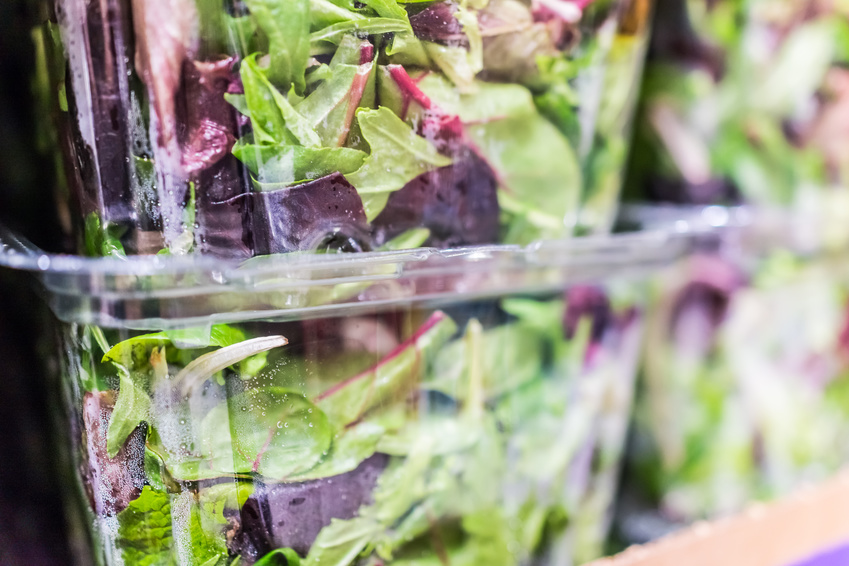Chances are, the last time you ate a lettuce salad, it came to you prewashed, pre-cut, prepackaged and ready to eat. Though it’s usually more expensive, pre-washed, bagged lettuce now outsells head lettuce by 2 to 1 in the US.
Pre-washed lettuce and pre-mixed salads certainly are convenient – and anything that encourages us to eat more vegetables is good. But are we losing something in terms nutrition?
Surprisingly, the nutritional difference between prepackaged lettuce vs fresh head or bunch lettuce is probably not significant. Both options are still rich in fiber, many vitamins, minerals and other nutrients. The biggest factor in terms of nutritional-content appears to be the freshness, according to a researcher at the British Nutrition Foundation. The key is to buy the freshest greens possible, keep them iced or refrigerated and then consume them as soon as possible. “If people were to buy a whole lettuce they may chop it up and store it in the fridge for days – so it would lose its vitamin content anyway.” Plus, prepackaged salads often consist of assorted dark greens that pack more nutrients that typical romaine or iceberg head lettuce.
Do I need to wash triple-washed, bagged lettuce?
According to US FDA, the answer is “No.” Chances are, the salad packager’s processing facility is cleaner than your kitchen. So, rinsing the lettuce as home won’t make it any cleaner — and your hands, salad spinner and utensils may even introduce new bacteria. Assuming that the contents look and smell fresh, they’ve been refrigerated properly, are being eaten within the use-by date and the package says that they’ve been triple-washed and are ready to eat, there is no benefit to washing them again. If, however, you notice signs of spoilage, wetness, slime or excess wilting, toss the greens.
But bacterial concerns shouldn’t apply only to pre-washed, packaged greens. Bunches or heads of lettuce should be placed in a plastic bag before placing in your grocery cart. There is no need to have grocery store checkers handling your fresh greens after they’ve been handling fish, meats, money and who knows what. Plus, even your hands can easily get contaminated when you’re out shopping. Placing fresh lettuce in a plastic bag also prevents contact with other potential contaminants like meat juices. Refrigerate the greens as soon as possible in a clean crisper drawer, away from meats or other foods that could drip onto them. And before eating, wash them well in cold water and spin or pat them dry with a paper towel.
But bacterial concerns shouldn’t apply only to prewashed, packaged greens. Bunches or heads of lettuce should be placed in a plastic bag before placing in your grocery cart. There is no need to have grocery store checkers handling your fresh greens after they’ve been handling fish, meats, money and who knows what. Plus, even your hands can easily get contaminated when you’re out shopping. Placing fresh lettuce in a plastic bag also prevents contact with other potential contaminants like meat juices. Refrigerate the greens as soon as possible in a clean crisper drawer, away from meats or other foods that could drip onto them. And before eating, wash them well in cold water and spin or pat them dry with a paper towel.
Is organic lettuce worth the added expense?
According the Environmental Working Group, organic lettuce is one of the foods that may be worth paying extra for. Lettuce is #15 on their list of fruits and vegetables with the highest pesticide residue. And if you’re a fan of spinach, then the argument for buying organic is even stronger; spinach is listed as #2 for highest pesticide residue.
